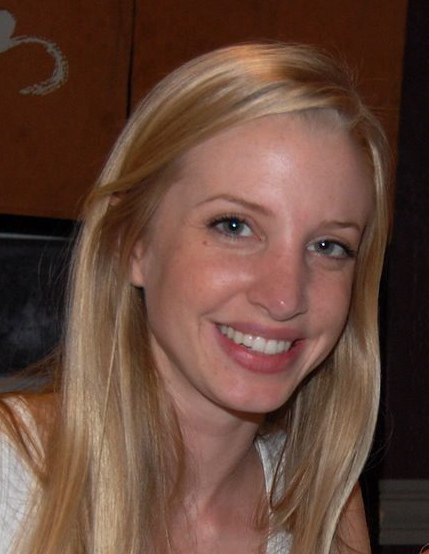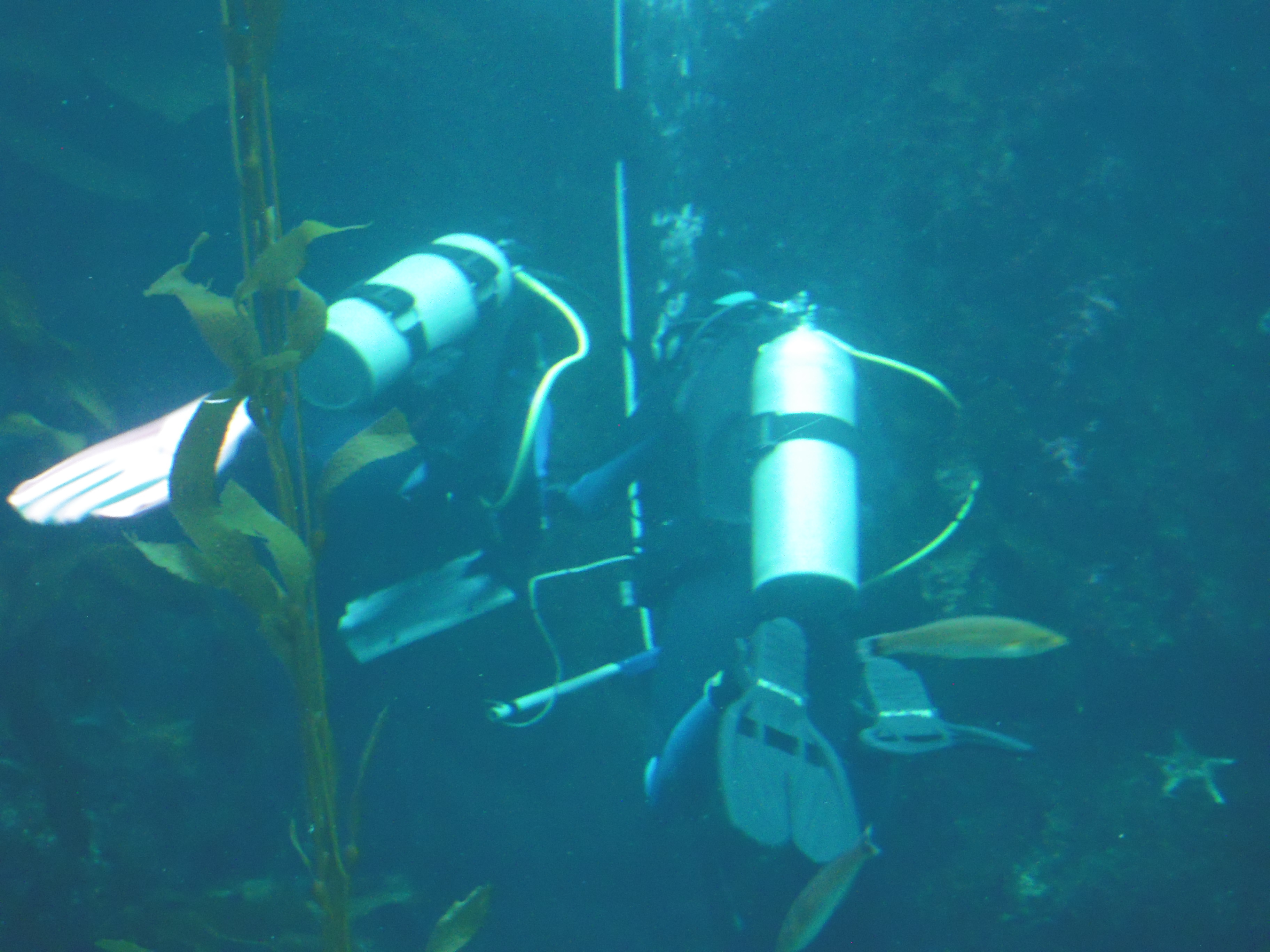
By Brynn Hooton-Kaufman, Phycology Lab
So far, this event has been the highlight of my graduate school career. I got to dive in the kelp forest tank at the Monterey Bay Aquarium. The same tank that I stared into for hours as a kid visiting Monterey on summer vacation, thinking, “How amazing are the people who get to dive in this tank? They must have qualifications that I couldn’t even think of getting.”
Well, I guess I was wrong! I have earned those qualifications while in grad school at MLML. I’ve earned my open water diver, rescue diver, master diver, scientific diver, and Reef Check ecodiver certifications, all in the short three years that I’ve been a student. And, the Aquarium even asked me (okay, asked the MLML Phycology Lab, which I’m a part of) to help them by surveying the algae in their kelp forest tank!

You see, some of the seaweed in the kelp forest tank is “planted” there by aquarium staff, but some of it shows up on its own. These “volunteer” seaweeds come through the aquarium’s seawater system as spores that settle and grow in the tank. The aquarium staff like to know who all of the critters inhabiting their tanks are, and that’s where the Phycology Lab comes in. Since we spend much of our graduate career studying and identifying seaweeds, we can survey the algae in the kelp forest tank pretty quickly and easily. And every few years, we get to!
I couldn’t help but chronicle this event on the GoPro underwater video camera that I got for Christmas. Why don’t you follow along with our dive, and I’ll explain what we’re doing. Jump on in:
[youtube http://www.youtube.com/watch?v=zSGGdEIKx28&hl=en&fs=1]
In this first video we’re gearing up. Paul gets help putting on his dive gear from Mike- there’s no reason to risk pulling something with all of that weight before you even get in the water! Sonya takes the first steps into the tank, and Arley helps her out with her mask and passes her fins. And during the time that the camera is pointed down, I’m checking my gear, making sure my regulator and back-up works. Every good dive starts with good planning and safety checks!
[youtube http://www.youtube.com/watch?v=x-FsW7NYJjI&hl=en&fs=1]
Finally, it’s my turn to get in the water! Speedy Paul climbs into the tank, gears up, and eases in before me. I make my way down the steps and take a seat, where I can comfortably and securely put on my fins. Then my mask goes on, and Arley hands me the RPC – random point contact – bar and makes some final adjustments. Into the tank I go!
[youtube http://www.youtube.com/watch?v=dVPHXMDO61Q&w=425&h=349]
I submerge, and take my first look around the tank. It might be hard to believe, but diving in the aquarium was a little stressful at first. We had to stay far away from the glass because our tanks could chip or crack it, we needed to avoid making big fin strokes because we could tear out or damage the kelp, and with seven people and all of those fishes in an enclosed space, we had to keep from kicking each other!
You’ll see the white vertical line – this is our transect line that we sampled along. I waited for my partner Sonya, and she found the place along the line where we were to take our first sample. My job was to place the RPC bar on this spot, then hold the marks on the line up to the place on the rock where Sonya identified the algae growing there. That way, we sampled a random place each time.
[youtube http://www.youtube.com/watch?v=tobIqH7jstA&hl=en&fs=1]
Sampling went smoothly and I got some great video, up until the point where the camera decided to make a break for it! Here you can see that it falls off of my head, and spirals toward the kelp forest tank floor. Thankfully we were in an enclosed space, and Paul rescued the camera later on. I’ll be securing it to my buoyancy compensator next time I take it for a dive!
So, that concludes this adventure. Thanks for joining me on my dive in the Monterey Bay Aquarium kelp forest tank! I’ll be taking the GoPro with me on future dives, so stay tuned for more videos of my adventures as an MLML grad student.

